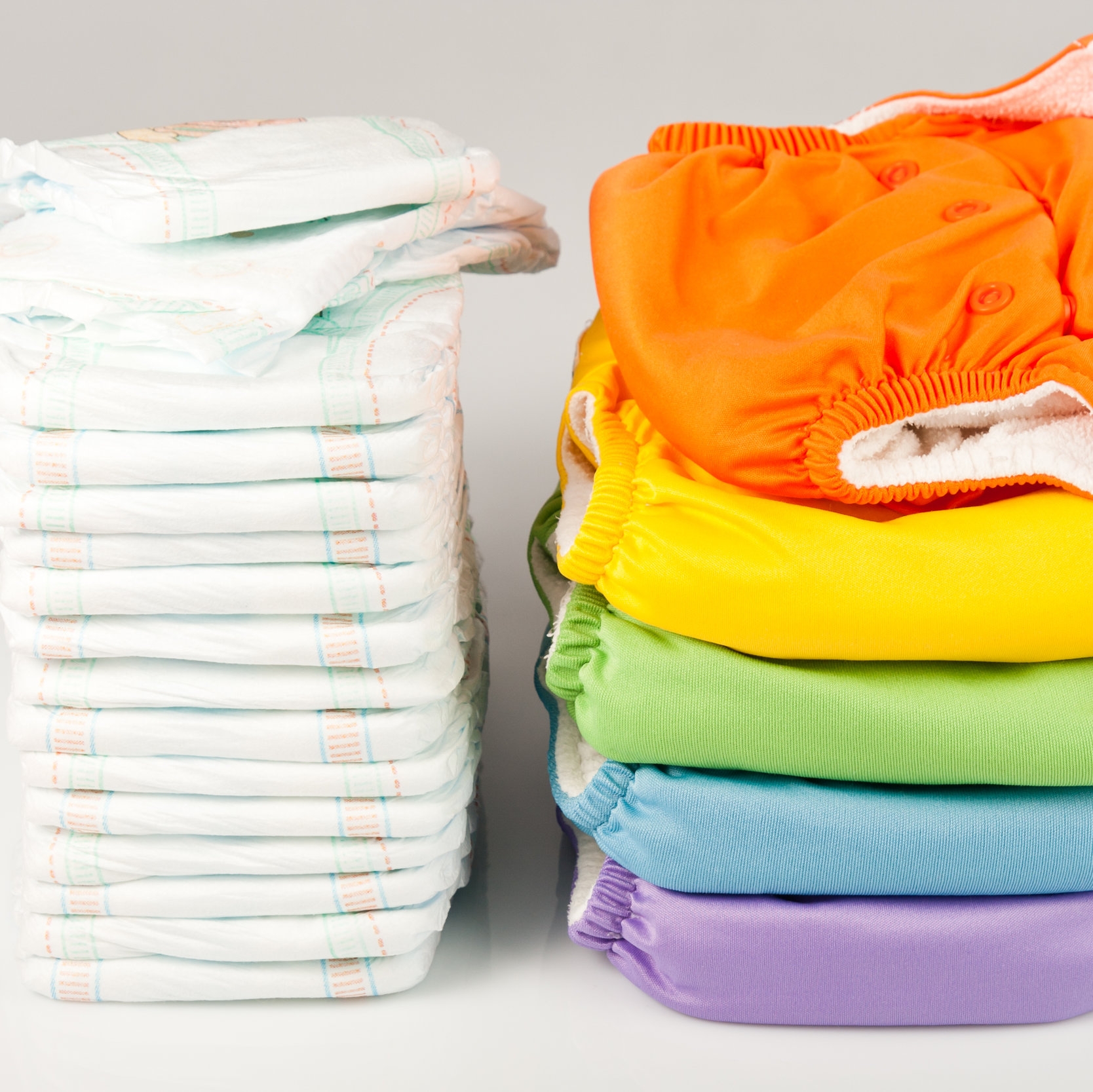
Still have questions? Ask an Expert!
We'll get back to you within 1-2 business days.
Disposable or reusable diapers? The debate about environmental impact rages. Looking at the prices for cloth diapers can give you sticker shock, but even just two years of cloth diapering, if you wash them yourself, can save a bundle of money. And because cloth diapers are so durable, if you plan to have more than one child you can save even more. The good news is that whichever approach you choose (or a mix of both) there are less-toxic options available.
Disposable diapers: Some chemicals of potential concern in disposable diapers are fragrance, dyes, chlorine, latex, tributyl-tin and solvents such as ethylbenzene, toluene and others. One study found that a mixture of chemicals in diapers was toxic to the respiratory tract. Disposable diapers can also contain polyurethane.
Cloth diapers: These are made from a wide variety of materials. Polyester is commonly used, and could contain antimony. The most common waterproofer in cloth diapers is a thin polyurethane layer. This form of polyurethane is much less likely to harbor harmful chemicals than polyurethane foam, but it is still produced from cancer-causing diisocyanates and oils. There are many options for all-natural materials like cotton for absorbent layers and wool for water-resistant layers.
Skin reactions: Whether you choose disposable or cloth diapers, some babies may have skin reactions to the chemicals in the disposable diaper or the detergent used to launder a cloth diaper.
Environmental impact: Diaper choice has been complicated in recent years by the debate on the environmental effects of diapers, mostly centered on the effects of disposable diapers on landfill space. A number of scientific studies have found that both cloth and disposable diapers have environmental effects, including raw material and energy usage, air and water pollution, and waste disposal. Disposable diapers add 1 to 2 percent to municipal solid waste, while cloth diapers use more energy and water in laundering and contribute to air and water pollution. Consider the pressing issues of your community - too little landfill space? persistent drought? - as you make your diapering choice.
Size: when possible, choose the smallest size that fits your little one so that is snug, prevents leaks but is not too tight.
If you are using cloth diapers, you'll need to be careful about which diaper creams you use, as some can clog the cloth. It isn't hard to find appropriate creams, however. It takes a little bit of practice to learn how to clean cloth diapers, and there are a lot of resources on the web.
The American Academy of Pediatrics recommends that if you choose disposable diapers, cover them with clothing as children can suffocate if they tear off a piece of the outer lining, put it in their mouths and swallow it.
If you choose disposable diapers, look for products that fully disclose ingredients, are unscented, and don't use bleach to make their diapers white. If you choose cloth diapers, consider natural material inserts to absorb liquids. You may be able to find gently-used cloth diapers. As with all textiles, wash all cloth diapers before use.
Learn more about the hidden hazards by reviewing the glossary or take a deep dive by reading Safer Products for Babies and Toddlers: Resources and Recommendations for Retailers.